Recent Water Damage Posts
Water Damage Restoration Services in Lafayette
10/30/2024 (Permalink)
Water damage can be a major disruption for Lafayette residents, leading to structural damage, mold growth, and costly repairs if left untreated. SERVPRO of Lafayette specializes in fast, reliable water damage restoration to keep your property safe and secure.
Our certified team understands that quick response is essential to minimize water damage. We start by assessing the extent of the damage, followed by thorough water extraction, drying, and dehumidification. Using state-of-the-art equipment, we remove all moisture from hidden areas, ensuring your home or business is protected against mold growth and further structural issues.
DIY water cleanup may leave behind moisture that can lead to future problems. SERVPRO of Lafayette has the training and tools needed to provide a comprehensive cleanup and full restoration, returning your property to its pre-damage condition.
For dependable water damage cleaning in Lafayette, contact (337) 269-6332. Our team is ready 24/7 to help restore your property and bring peace of mind.
Water Damage and Electronics: How to Save Your Soaked Devices
10/17/2023 (Permalink)
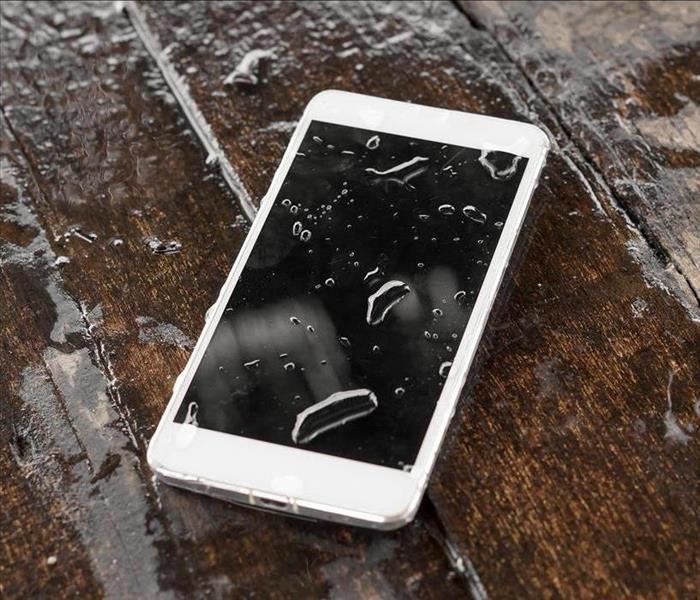 Remember, restoring water-damaged electronic devices is not always guaranteed to work, but these tips can help increase your chances of success.
Remember, restoring water-damaged electronic devices is not always guaranteed to work, but these tips can help increase your chances of success.
Water damage is a common problem that can affect electronic devices like smartphones, laptops, and tablets. Whether it's a spilled drink or an accidental drop in the pool, exposure to water can cause significant damage to electronic devices. However, with the right approach, restoring water-damaged electronics is possible. In this blog post, we will explore some useful tips for handling water-damaged devices.
Power off the Device
The first step when dealing with water-damaged electronics is to switch off the device immediately. This helps to prevent further damage that can be caused by a power surge. For devices like smartphones and laptops, remove the battery, SIM card, and any other removable parts. This helps to prevent any further damage to these components.
After removing the removable parts, dry the device as much as possible. Use a soft, absorbent cloth to wipe away any visible water on the device. Alternatively, you can use a can of compressed air to blow out any water that may be inside the device.
Use a Desiccant Material
Place the device in a container of desiccant material to help absorb the remaining moisture. Popular desiccants include dry rice, silica gel, and kitty litter. Leave the device in the container for several hours to allow the desiccant material to absorb the moisture. Use a soft cloth or tissue to gently wipe away any visible water on the device's exterior. Be careful not to rub the water further into crevices or openings. Using waterproof cases or covers can provide an extra layer of protection for your devices. These accessories are designed to prevent water from seeping into the device in case of accidental exposure.
Seek Professional Help
If you are unable to restore your device on your own, consider seeking professional help. Many electronics repair shops specialize in repairing water-damaged devices. A professional technician will have the necessary tools and expertise to restore your device safely and effectively.
Avoid Common Mistakes
When trying to repair your water-damaged electronic device, avoid common mistakes like using a hairdryer to dry the device or placing the device in direct sunlight. The heat can damage your device further and will do more harm than good. When using electronic devices outdoors, be aware of weather conditions. If rain or storms are in the forecast, take extra precautions to keep your devices dry.
Remember, restoring water-damaged electronic devices is not always guaranteed to work, but these tips can help increase your chances of success. The key is to act fast and follow the right steps to avoid further damage and increase the chances of restoring your device. In some cases, it may be more cost-effective to replace the device entirely, especially for older electronics. However, if you have a newer or more expensive device that you wish to salvage, following these simple tips can help restore it to its former glory. Prevention and quick action are key when it comes to water damage. Taking the necessary precautions and knowing how to handle a water-damaged device can save you time, money, and the inconvenience of being without your favorite gadgets.
A Comprehensive Guide: How to File a Water Damage Claim
7/24/2023 (Permalink)
 Filing a water loss with insurance can help recover cost associated with your property loss.
Filing a water loss with insurance can help recover cost associated with your property loss.
Experiencing water damage in your home can be a stressful and overwhelming situation. Fortunately, many homeowners' insurance policies cover water damage caused by various factors. Filing a water damage claim can help you recover the costs associated with repairs, restoration, and replacing damaged belongings. In this blog, we will provide a step-by-step guide on how to file a water damage claim to ensure a smooth and successful process.
Assess the Damage and Document
Before contacting your insurance company, thoroughly assess the extent of the water damage. Take detailed photographs or videos of the affected areas, documenting the damage to support your claim.
Make a list of damaged items and gather any relevant receipts or invoices related to repairs or purchases. Maintain a record of all communication with your insurance company. Take note of the dates, times, names of the representatives you speak with, and a summary of the conversations. This documentation will be valuable if any issues arise during the claims process.
Review Your Insurance Policy
Carefully review your homeowners' insurance policy to understand the coverage and exclusions related to water damage. Pay attention to specific terms, limitations, and deductibles. Familiarize yourself with the steps and requirements for filing a claim outlined in the policy.
Notify your insurance company as soon as possible to report the water damage and initiate the claims process. Provide them with essential details, such as the date of the incident, a description of the damage, and the affected areas. Follow their instructions regarding the next steps and documentation they may require.
Mitigate Further Damage
Take immediate action to prevent further damage and protect your property. If safe to do so, address the source of the water leak or shut off the water supply. Remove any standing water and begin the drying process to prevent mold growth and additional structural damage. Keep records of any actions taken to mitigate further damage, including receipts for professional services.
Insurance claims
Your insurance company will likely assign a claims adjuster to evaluate the damage and determine the coverage and reimbursement. Schedule an appointment with the adjuster to inspect the property and provide them with the evidence of the damage, including photographs, videos, and itemized lists.
Obtain multiple repair estimates from reputable contractors or restoration companies. These estimates will help validate the cost of the repairs and provide evidence to support your claim. Share the estimates with the claims adjuster and discuss the scope of the necessary repairs.
Submit the Required Documentation
Follow your insurance company's instructions to submit the necessary documentation for your claim. This typically includes a completed claim form, a detailed description of the damage, itemized repair or replacement costs, receipts, photographs, and any other supporting evidence they require. Ensure that all documentation is accurate, complete, and submitted within the designated time frame.
Review the Settlement Offer
Once your insurance company evaluates your claim, they will provide a settlement offer outlining the coverage and reimbursement they are willing to provide. Carefully review the offer, paying attention to any discrepancies or items that may have been overlooked. If you have concerns or believe the offer is inadequate, discuss it with your claims adjuster or seek professional advice.
Once you accept the settlement offer, proceed with the necessary repairs and restoration work. Retain all receipts, invoices, and documentation related to the repairs, as they will be required for reimbursement. Take photographs of the completed repairs for your records.
Filing a water damage claim can help you recover the costs associated with restoring your property and belongings after a water-related incident. Following this guide you can navigate the claims process effectively and maximize your chances of a successful outcome. Remember, if you have any questions or concerns, don't hesitate to seek guidance from your insurance company or consult with a professional.
How to prevent pipe breaks from happening
3/4/2023 (Permalink)
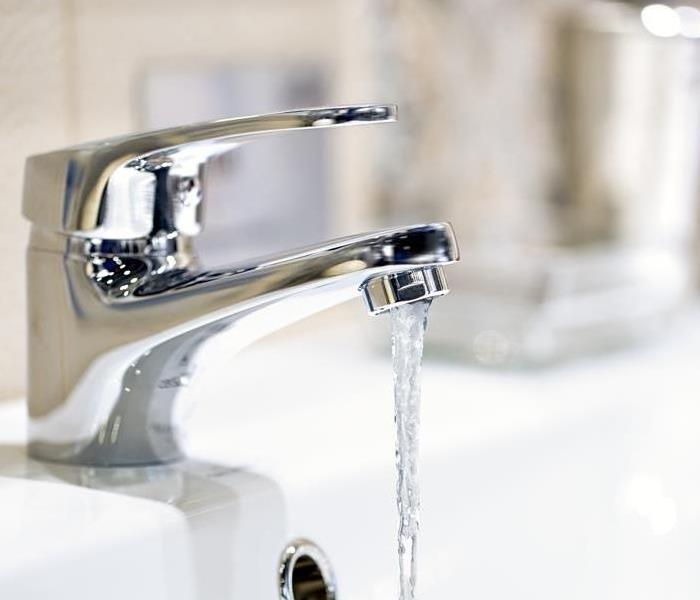 Preparing for a freeze can help prevent water damage to your home or business.
Preparing for a freeze can help prevent water damage to your home or business.
Frozen pipes are a common issue that homeowners face during cold weather months. When water freezes in your home's plumbing, it can cause serious damage to your property and lead to expensive repairs. If you're looking for ways to prevent frozen water pipe breakage from occurring in your home or business as winter breaks, read below!
Pipe breaks are serious
Water damage from frozen pipes is a serious issue and can happen to anyone. The cost of repairing the damage can be expensive, but there are some things you can do to prevent it.
If you live in an area where freezing temperatures are common, winterizing your home's plumbing system is essential for avoiding costly repairs or replacement later on. A little preparation now will save time and money down the road when those freezing temperatures arrive again next year!
How to tell if you have frozen pipes.
If you think your pipes are frozen, there are some things you can do to check. First, look at the outside of your pipes. If they're covered in ice, chances are good that they've been frozen and need attention.
Secondly, check to see if your water flow is smooth or slow--if it's flowing smoothly, then there isn't anything wrong with your pipes.
Prevent frozen water pipe breakage.
You can prevent frozen water pipe breakage by draining the pipes before freezing temperatures arrive. You can also insulate pipes in unheated areas of your home, such as attics and crawl spaces.
Drain faucets at least once a year to keep them from freezing during cold weather. Make sure all other drains are clear of debris as well, especially around fixtures like washing machines or dishwashers that may have drainage hoses attached to them.
Frost proof faucet
To prevent your outdoor faucet from freezing, install a frost-proof outdoor faucet. These special faucets have an internal valve that opens when the temperature drops below freezing, allowing water to drain from the pipe and preventing it from freezing. Frost-proof outdoor faucets are available at home improvement stores and can be installed by anyone with basic plumbing skills.
There are several ways that you can prevent frozen water pipe breakage from occurring in your home.
Frozen water pipe breaks can cause a serious issue for anyone. There are several ways that you can prevent frozen pipe breakage from occurring in your home, including draining the pipes before freezing temperatures arrive and installing a frost-proof outdoor faucet. If you have any questions about how to take care of frozen pipes or need professional assistance with this issue, contact us today!
Water is Leaking Through My Light Fixture! What Should I Do?
11/15/2022 (Permalink)
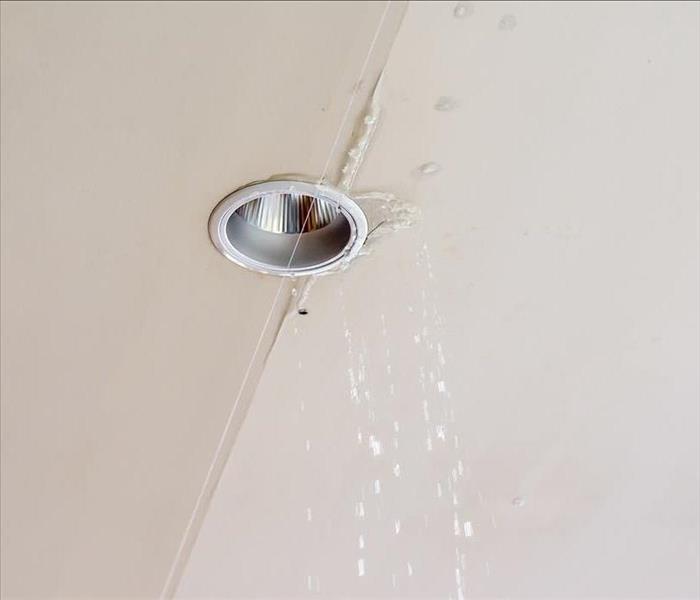 If your water is leaking through a light fixture, act quickly.
If your water is leaking through a light fixture, act quickly.
Why Water Is Leaking Through My Light Fixture?
Water leaking through a light fixture is a common problem in homes that have plumbing leaks, which can occur either under or behind the sink, around the bathtub, or anywhere where water can collect. When it happens, it's important to act quickly to prevent further damage. This article will help you understand why water is leaking through your light fixture and what you can do about it.
If your water is leaking through a light fixture, there are several things you should do immediately. This is a serious problem. Do not touch the light fixture or any electrical equipment in the area. Call an electrician right away to fix it for you. If you don’t know where to find an electrician, look online or ask friends and family members if they can recommend somebody. Do not try to fix this by yourself!
Turn Off the Water and Electricity
This should be obvious, but it's worth stating. Turning off the water will prevent further damage if you don't know where the leak is coming from yet. If you can't turn off your pipes or faucet, use a wet/dry vacuum to clean up as much water as possible before calling a professional for help.
Clean Up the Mess
If you have a wet/dry vacuum, use it to suck up any water that is on the floor. If this is impossible to do due to the leak being too big or your vacuum not being strong enough, then use a towel or other absorbent material (like an old t-shirt) and soak up as much water as possible.
Monitor the Situation
To monitor the situation, you'll need to keep an eye on the room temperature and humidity levels. If they rise above normal levels and/or you notice a musty odor, it's possible that mold has begun to grow in your home. If this happens, call a specialist right away! It's important not to wait until the damage is too severe before seeking out help—a professional can help you fix any problems before they become too severe.
Respond Quickly
Water damage in your home can be a big problem, but it's important to respond quickly. You should never ignore water leaks, as they can cause serious problems if left unattended for a long time. The longer the water sits, the more damage it does.
If you notice any water leaking in your house or building, there are several steps you can take to make sure that this doesn’t cause long-term damage:
Turn off the source of the leak ASAP: Whether it’s a burst pipe or faulty shower head, turn off whatever is causing the leak immediately by shutting off its valve under sink or behind toilet tank.
Check for signs of mold growth: Mold spores need warmth and moisture to grow so if you see soggy drywall or other materials that were once dry becoming damp and moldy (moldy), then there's probably been some sort of water intrusion somewhere in that area recently - usually through porous materials like wood paneling or carpeting which absorb liquid instead of repelling it outward like rubberized coatings do on bathroom walls!
We hope that this article has helped you figure out what to do if water is leaking through your light fixture. If you’re concerned about water damage in your home, it’s important to respond quickly. That way, you can avoid issues like mold growth and costly repairs!
When you have a water leak in your home, SERVPRO of Lafayette is here to help you get your Baton Rouge, LA home back to normal!
How To Effectively Take Care of a Basement Flood
7/20/2022 (Permalink)
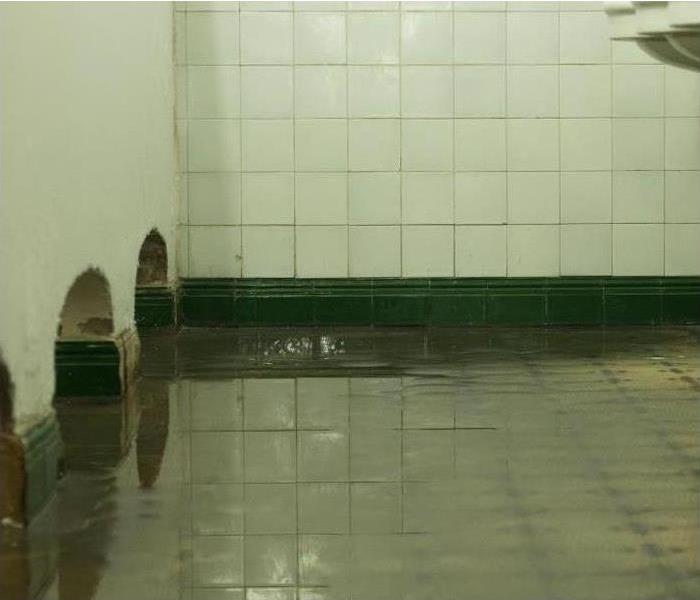 By following these steps, you can clean up after a basement flood.
By following these steps, you can clean up after a basement flood.
How to Handle a Basement Flood Effectively
Of all the places in your home, the basement may be the most common spot for water problems. Many people in Lafayette, LA, have dealt with a basement flood. Your location, poor drainage or plumbing problems could lead to flooding here. Make sure you know what to do if you face this challenge. The right response can spare you a lot of stress and grief.
Your First Steps
When you first discover a basement flood, assess the situation, and make sure everyone in your home is safe. If the water is threatening anyone's safety, evacuate the house and call 911. You should then do the following:
- Find the source of the flood and stop it if you can safely do so.
- Remove materials from the area and get them to higher ground.
- Unplug electronics or turn off the power to your home.
Start Removing the Water
A flooded basement can come in all sizes. If the water covers a small area, you can grab a wet vacuum and extract the water yourself. You should also get some air moving by placing fans in the area.
Call the Pros
If the water is spreading throughout the basement and damaging materials, get in touch with a professional flood cleanup company. Professional technicians can get to your home within a few hours of your call. The crews will use industrial-grade machines to pump out and remove all the water from the basement. The team will then dry and disinfect the area to make sure there is no mildew or mold growth.
File a Claim
Insurance coverage is essential when it comes to cleaning up after a flood. Your policy should be effective if there was a sudden, unexpected pipe burst or appliance leak. Give details to your agent about what has happened. Provide pictures of the damage.
By following these steps, you can clean up after a basement flood. A professional company can help make this process faster and more thorough.
3 Common Causes for a Shower Leak
5/20/2022 (Permalink)
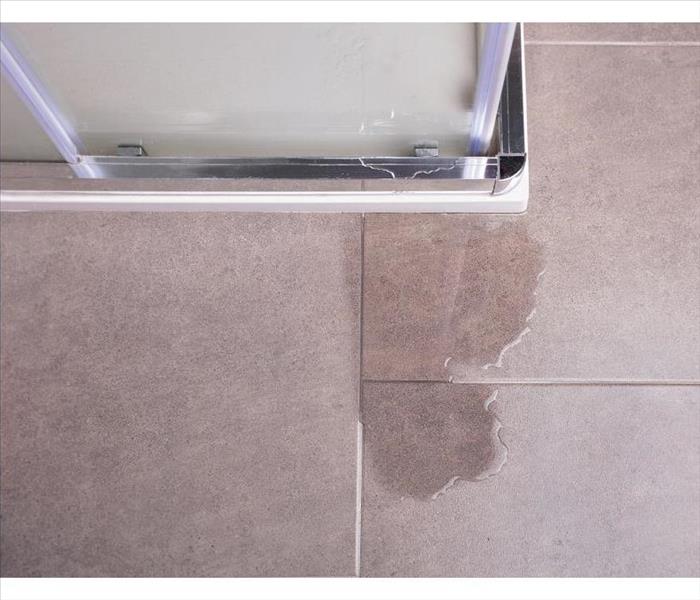 Shower pans can become damaged or worn and start to leak.
Shower pans can become damaged or worn and start to leak.
Reasons Your Shower Could Be Leaking
If you regularly see standing water after a bath or shower, you'll want to address the situation immediately to ensure you don't have a bathtub leak in your Lafayette, LA, home. Here are three reasons your shower could be leaking.
1. Broken Tiles or Missing Grout
Even a tiny crack in the tile or grout of your shower can cause a sizable bathtub leak. The water from the shower seeps through the crack and can damage the sheetrock and wood behind the wall. Look closely at each tile, and the surrounding grout, in the shower and look for cracks or missing pieces. If you don't feel that you can replace or repair the damaged tiles yourself, contact a water damage restoration service to fix them and have them address any potential water damage from the leak.
2. Shower Pan Leak
Over time, shower pans can become damaged or worn and start to leak. To check for a leak, cover and plug the drain to ensure no water can get down it. Then, fill the shower pan with a couple of inches of water. If the bathroom is on the second floor, keep an eye on the ceiling underneath the bathroom. However, if the bathroom is on the main floor, look at the joists under the house. If there is a leak in your shower pan, you'll start to see water spots appear in as little as 20 minutes.
3. Damaged Caulking or Gaskets
One culprit that often causes a shower or bathtub leak is damaged caulking or missing gaskets. If you have a door on your tub or shower, turn on the shower and aim the water at the door. Look for any areas where water is obviously leaking out. Replace any missing caulking or gaskets to ensure the water stays inside the shower where it belongs.
Shower leaks can be stressful. However, knowing what to look for and relying on professionals can make a hard time lot easier to handle.
5 Tips to Prevent Spring Flooding at Your Business
3/1/2022 (Permalink)
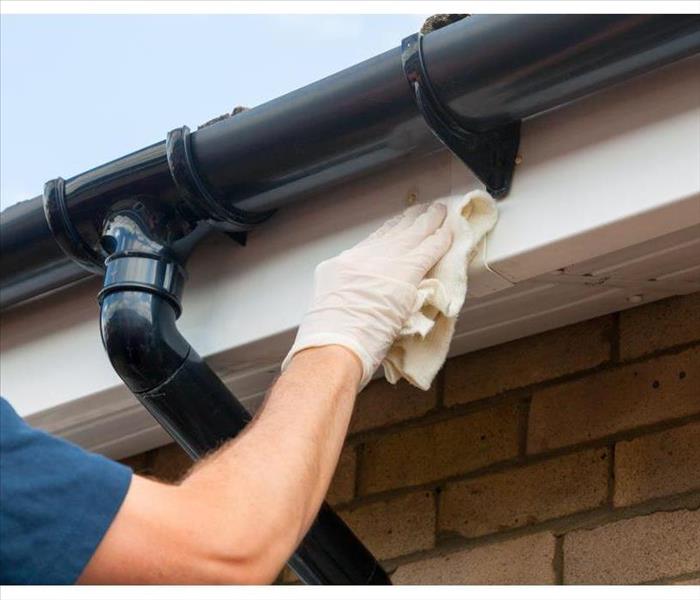 Keep your gutters clean.
Keep your gutters clean.
Prevent Flooding at Your Business
After a long winter, it is finally time to start planning for the warmer months ahead. If you own a business in Lafayette, LA, spring can be a busy season for profits, but it also is a busy season for flooding. Fortunately, there are things you can do to prevent problems during the next thaw. Follow these steps to reduce the chances of needing to hire a water damage restoration professional once the weather warms up.
1. Relocate Snow
Never underestimate the water capacity in a pile of snow. For this reason, you will want to clear away from the building's foundation. Ideally, snow should be at least three to five feet away, but the further away it is, the better.
2. Clean Out Gutters
After dealing with the snow, you will need to look up. Over a long winter, gutters can collect a large amount of debris. Leaves, sticks and dirt can lead to blockages which can force water to seep into the building.
3. Make Repairs
Next, look around the property. Few things lead to flooding like a frozen pipe. Check plumbing carefully. Seal leaks and insulate exposed pipes. While making repairs, do not forget the foundation. If you see cracks, do not ignore them.
4. Optimize Landscape Drainage
How does water drain around the building? If necessary, regrade the surrounding land to allow for better drainage. You may need to move plants and soil to do this, but it can be worth it.
5. Consider a Professional Inspection
If you are still feeling unsure about how your building will hold up to this spring's thaw, scheduling an expert inspection can give you peace of mind. Sometimes, it is just better to know.
When the weather finally warms up, your business should experience spring profits, not a spring flood. By following these steps, you can reduce the chances of encountering common flooding problems.
Tips for Avoiding Secondary Damages After Flooding
1/17/2022 (Permalink)
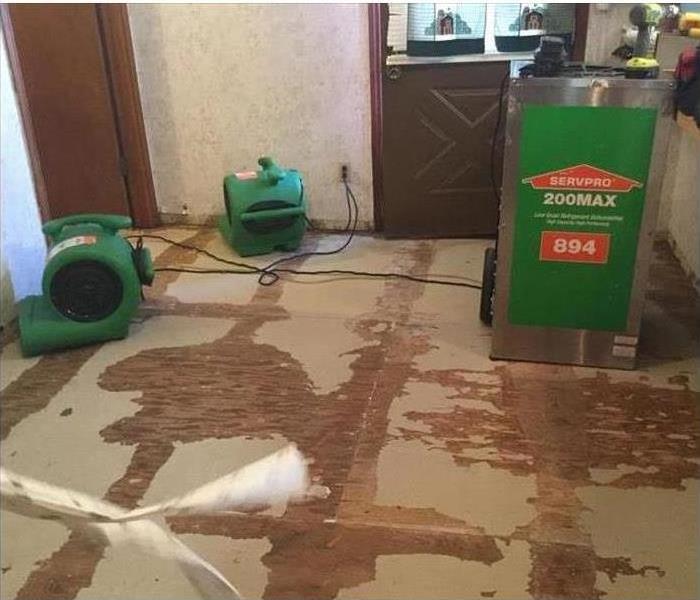 High-volume dehumidifiers and powerful fans are necessary tools for quickly and thoroughly drying rooms affected by flooding.
High-volume dehumidifiers and powerful fans are necessary tools for quickly and thoroughly drying rooms affected by flooding.
Preventing Further Damage After Flooding
When your home is affected by flooding from a winter storm or a broken pipe, secondary damage is a very real concern. As high humidity spreads throughout the residence, the chances of black mold taking hold and porous materials in your home absorbing moisture increase. Responding to flooding immediately is crucial to preventing further damage.
Commercial-Grade Equipment
Whether you involve a Lafayette, LA, flood damage cleanup company or try to tackle the situation on your own, you will need to use commercial-grade drying equipment. There are several reasons for this.
- Your home's air conditioner isn't strong enough to handle the additional moisture.
- The longer it takes to thoroughly dry your home, the more at risk you are of facing black mold damages.
- You'll get back to your normal routines more quickly.
Secondary Damages
Additional damages after flooding include the growth of mold behind drywall, in the attic, below carpeting, and in hidden corners. High levels of moisture can lead to weakening in the materials used to build your home, including wood, insulation, and cabinetry. In addition to long-term negative effects, your costs and losses could be increased when water extends from the initial affected area. As water spreads under doors and through walls, it reaches areas of the home that could have been protected. Removing water and drying the area thoroughly is the best way to avoid the spread of damages.
Water Removal Technicians
High-volume dehumidifiers, specialized heaters, and powerful fans are necessary tools for quickly and thoroughly drying rooms affected by flooding. Professional flood damage restoration technicians have the training and experience to set the equipment up for quick results. Experienced workers are often willing to share tips for avoiding problems such as recurring leaks or flooding.
Takeaway Tips
Remember, you need to act immediately. Powerful commercial-grade tools are essential for preventing secondary damages, such as black mold. Hiring Lafayette, LA, professionals is a great way to enjoy long-term protection for the well-being of your home and the health of your family.





 24/7 Emergency Service
24/7 Emergency Service







